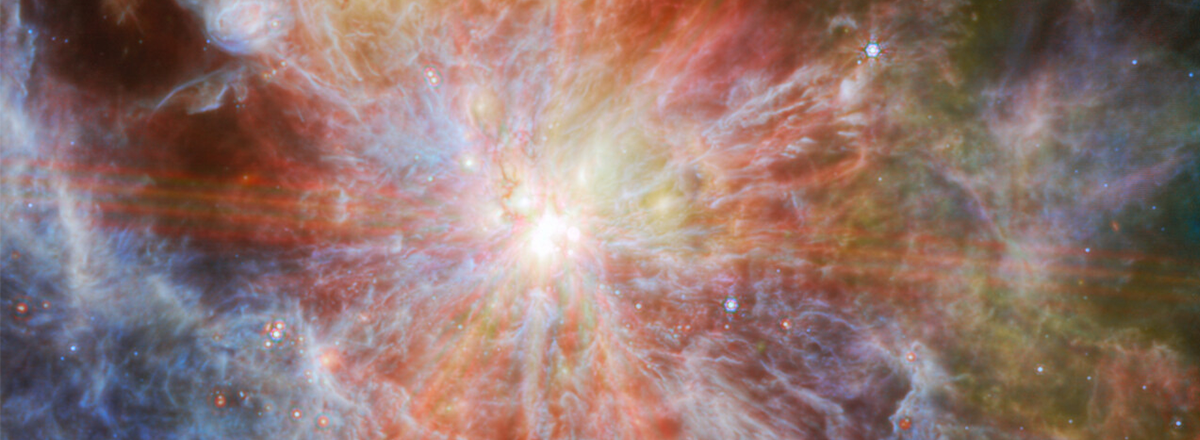NASA's James Webb Space Telescope Captures Spectacular Star Factory in a Nearby Galaxy
By studying regions like N79 with the JWST, scientists can gain valuable insights into the composition of gas and dust clouds during the early universe's peak star formation period.

NASA's James Webb Space Telescope (JWST) has unveiled a breathtaking image of an interstellar star-forming region, offering a glimpse into the birth of stars in a neighboring galaxy, the Large Magellanic Cloud (LMC). This striking image showcases N79, a nebula spanning approximately 1,630 light-years and characterized by vibrant yellow, orange, and blue hues.
N79 is a region of interstellar atomic hydrogen that is actively giving rise to new stars and remains relatively uncharted territory for astronomers. Situated in the southwest region of the LMC, N79 is often regarded as a younger counterpart to the Tarantula Nebula, also known as 30 Doradus. Surprisingly, N79 has been forming stars at double the rate of 30 Doradus over the past 500,000 years, despite their striking similarities.
The captivating image not only highlights the star-forming beauty of N79 but also showcases a distinctive "starburst" pattern surrounding the brightest core. These diffraction spikes are a result of the hexagonal arrangement of JWST's 18 primary mirror segments, and they appear when the telescope observes exceptionally bright and compact objects.
The JWST captured this mesmerizing image using its Mid-InfraRed Instrument (MIRI), allowing astronomers to peer deep into the star-forming region. In this infrared view, the telescope can reveal young stellar bodies still shrouded in their natal cocoons of gas and dust, referred to as "protostars." These protostars have not yet accumulated enough material to initiate the fusion of hydrogen into helium in their cores, a process that defines a star's birth.
By studying regions like N79 with the JWST, scientists can gain valuable insights into the composition of gas and dust clouds during the early universe's peak star formation period. This information allows astronomers to compare and contrast star-forming regions in the Milky Way, shedding light on the diverse processes involved in star birth.

